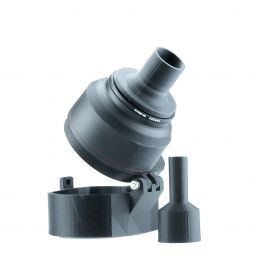Flip Snoot Pro for Sea&Sea YS-01/YS-02/YS-03
Snoot for the 03. You can easily build one with parts from Home Depot. this one is like $150
Bi
Where is the link?
Welcome to ScubaBoard, the world's largest scuba diving community. Registration is not required to read the forums, but we encourage you to join. Joining has its benefits and enables you to participate in the discussions.
Benefits of registering include
Flip Snoot Pro for Sea&Sea YS-01/YS-02/YS-03
Snoot for the 03. You can easily build one with parts from Home Depot. this one is like $150
Bi
Where is the link?

I think the UW camera store has a 3-d printing group called flip adapters.com they make lots of 3-d printed gizmos. There is also this
Flip Snoot Pro for Sea&Sea YS-01/YS-02/YS-03
Buy Flip Snoot Pro for Sea&Sea YS-01/YS-02/YS-03 | Europe's Nr. 1 Underwater Camera Store | Expert Advice & Worldwide shippingwww.uwcamerastore.com
